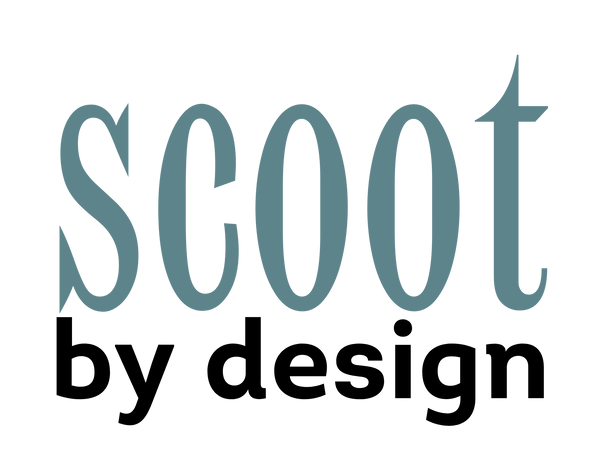
Mastering the Art of Online Job Interviews: Strategies for Success
1. Set Up Your Space
Creating a professional and distraction-free environment is crucial for an online interview. Here’s how you can prepare your space:
- Choose the Right Spot: Select a quiet area with minimal background noise and distractions. Ensure this space is clean and free of any clutter that might appear unprofessional.
- Good Lighting: Natural light is best, but if that's not available, position a lamp in front of you to illuminate your face. Avoid backlighting, as it can cast shadows and make it hard for the interviewer to see you.
- Neutral Background: A plain wall or a tidy, professional-looking backdrop works well. Avoid busy patterns or anything that could divert attention from you.
2. Dress the Part
Even though you’re not meeting in person, dressing professionally from head to toe can have a significant impact on your confidence and presentation.
- Professional Attire: Wear the same type of clothing you would for an in-person interview. This shows respect and seriousness about the position.
- Complete the Look: While it might be tempting to only dress up the top half, wearing professional pants or a skirt helps you maintain a professional mindset.
3. Test Your Technology
Technical glitches can disrupt the flow of an interview and leave a poor impression. Take these steps to ensure everything runs smoothly:
- Check Your Internet Connection: Ensure you have a stable and strong internet connection. Consider using a wired connection if possible for added reliability.
- Test Your Equipment: Check your computer, camera, and microphone well in advance. Make sure your camera provides a clear image and your microphone picks up your voice clearly.
- Familiarize Yourself with the Platform: Whether it’s Zoom, Microsoft Teams, or another platform, get comfortable with its features. Test functionalities like screen sharing and the mute button.
4. Practice Makes Perfect
Rehearse your answers to common interview questions and practice speaking clearly and confidently.
- Mock Interviews: Conduct mock interviews with a friend or mentor. This can help you get comfortable with the format and receive constructive feedback.
- Record Yourself: Record practice sessions to review your body language, tone, and pacing. This will help you make necessary adjustments and improvements.
5. Master Non-Verbal Communication
Your body language speaks volumes, even through a screen. Pay attention to how you present yourself:
- Eye Contact: Look directly at the camera when speaking, not at the screen. This simulates eye contact and makes you appear more engaged and sincere.
- Posture: Sit up straight and lean slightly forward to show interest and enthusiasm. Avoid slouching or leaning back too much.
- Facial Expressions: Smile and use natural facial expressions to convey warmth and engagement. Nod occasionally to show you’re actively listening.
6. Prepare Your Answers
Have well-thought-out responses to common interview questions. Highlight your skills and experiences in a way that aligns with the job description.
- STAR Method: Use the Situation, Task, Action, Result (STAR) method to structure your answers. This provides a clear and concise way to showcase your accomplishments.
- Tailor Your Responses: Customize your answers to reflect the specific needs and values of the company you’re interviewing with. Show that you’ve done your homework and understand their mission.
7. Have Questions Ready
Asking insightful questions shows your interest in the role and the company. Prepare a list of questions in advance.
- Company Culture: Ask about the company’s culture, team dynamics, and opportunities for growth. This demonstrates your long-term interest in the organization.
- Role Expectations: Inquire about the specific responsibilities of the role, success metrics, and potential challenges. This shows you’re thinking critically about how you can contribute.
8. Handle Technical Issues Gracefully
Despite your best preparations, technical problems can still occur. How you handle them can make a big difference.
- Stay Calm: If something goes wrong, remain calm and composed. Apologize for the disruption and work to resolve the issue quickly.
- Have a Backup Plan: Keep your phone handy in case you need to switch to an audio call. Inform the interviewer of your backup plan at the start of the meeting.
9. Follow Up with a Thank You Note
A thoughtful thank you note can reinforce your interest and leave a positive impression.
- Be Prompt: Send a thank you email within 24 hours of the interview. Mention specific points discussed during the interview to personalize the message.
- Express Gratitude: Thank the interviewer for their time and consideration. Reiterate your enthusiasm for the role and how you believe you can contribute.
10. Reflect and Learn
After the interview, take some time to reflect on your performance and what you can improve for future interviews.
- Self-Assessment: Consider what went well and what could have been better. Note any questions that caught you off guard and prepare better answers for next time.
- Seek Feedback: If possible, ask for feedback from the interviewer. Constructive criticism can provide valuable insights for your professional growth.
Preparing for and succeeding in an online job interview involves a combination of technical readiness, professional presentation, and effective communication. By setting up a professional space, dressing appropriately, practicing your responses, and handling technical issues with grace, you can make a strong impression on your potential employer. Remember to follow up with a thank you note and reflect on your experience to continually improve. With these strategies in your arsenal, you’ll be well-equipped to navigate the virtual interview landscape and secure the job you desire. Here's to your success!
